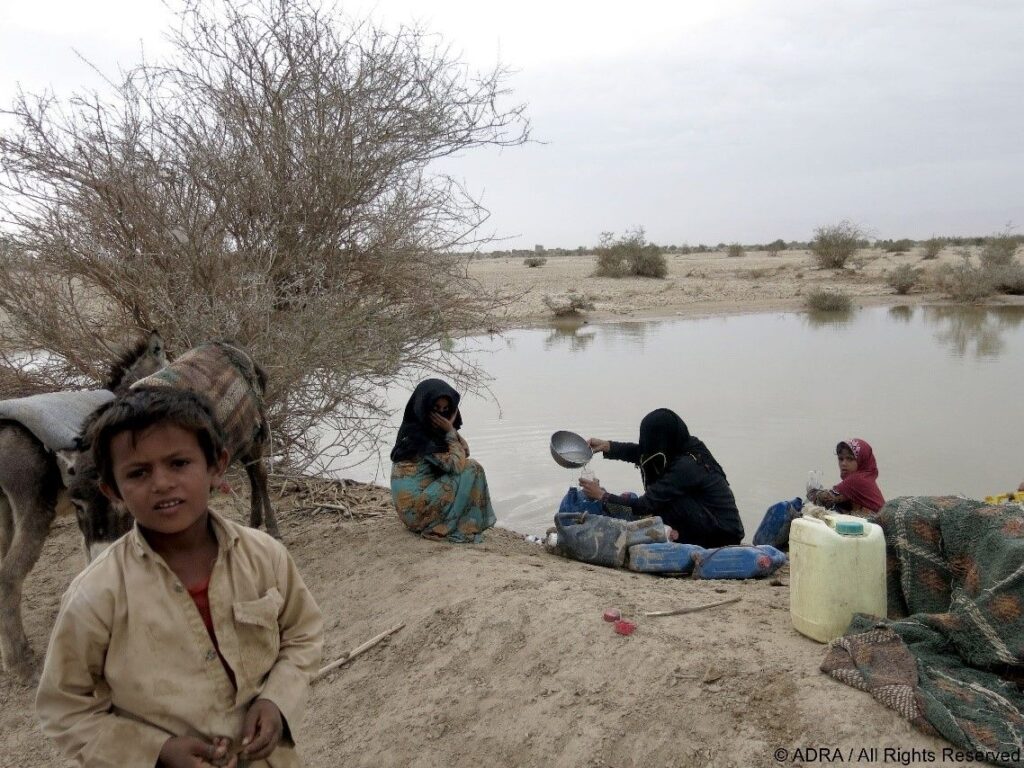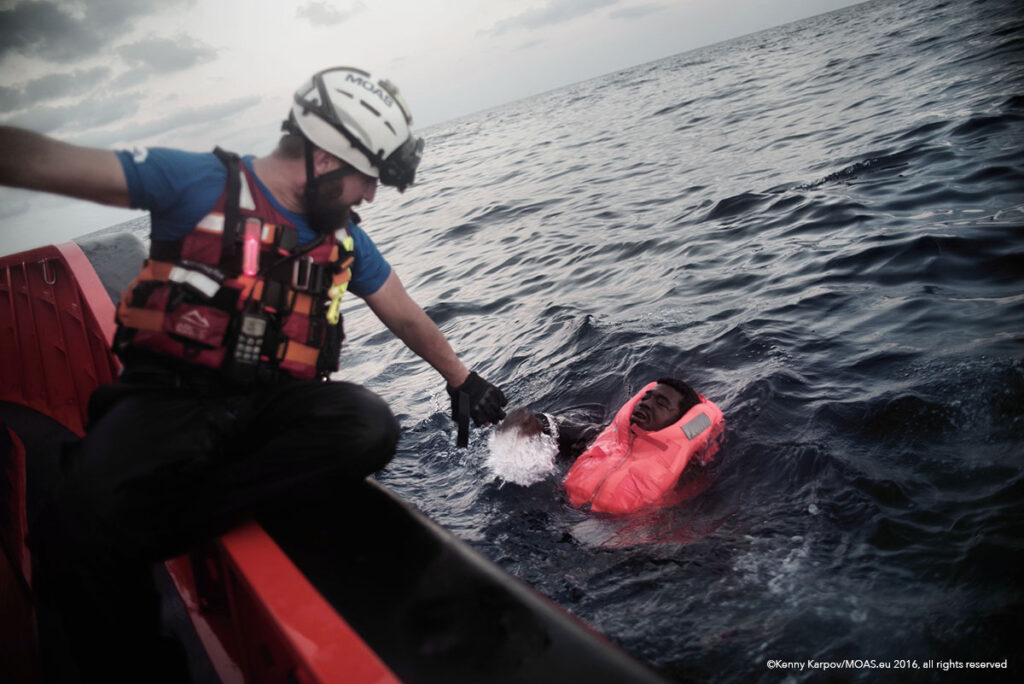The start of a new year brings with it new possibilities – but also presents challenges. This latest MOAS blog will be exploring some of the projected trends and changes in the humanitarian sphere for 2020, focusing on how international humanitarian actors are seeking fresh approaches to mitigate new and existing global challenges and what needs to be done to provide the best possible assistance to people in need.
Climate Change
Climate change has emerged as the most urgent problem of our time: whilst Australia burns, drought in the Horn of Africa is threatening 15 million people and more than 73,000 people were left homeless by Cyclone Idai which devastated Mozambique in March 2019. With everyone having a part to play in reducing negative environmental impact – aid organisations are no exception. The New Humanitarian has predicted that in 2020 there will be a move by aid agencies to reduce their carbon footprint by using less long haul flights, fewer diesel generators ad more innovative ways of working transnationally. Apart from having environmental benefits, this could also work to improve and increase in cash-based aid and an even greater move to promote the involvement and project ownership of local aid organisations, as fewer international staff are shipped across the world on long haul flights meaning that national talent and expertise is utilized instead.
Specifically targeting aid initiatives towards reducing climate change can have a myriad of positive effects. Climate change is a risk multiplier for communities already facing adversity, creating new vulnerabilities and exacerbating existing challenges. Mass displacement motivated by environmental pressures causes damage to infrastructure and competition for resources and can exacerbate existing social and political tensions. In fact, 13 out of the 20 countries most vulnerable to the effects of climate change were also experiencing active conflict in 2019. The link between conflict and climate change cannot be ignored and effective humanitarian assistance and disaster preparedness needs to be in place in climate emergency prone areas, to prevent situations from entering a negative spiral of disaster and violence. Swift or preemptive action to mitigate the effects of climate change could prevent a wide range of humanitarian issues in the future.
Funding
Breaking down the traditional ‘silos’ of aid spending where resource allocation focuses on short term projects and instead fostering a triple nexus approach was first introduced three years ago. Moving into 2020, this approach to funding looks set to continue and expand. It requires that humanitarian relief, long term development and peace promotion efforts to all be considered within funding allocations from many large funding bodies.
Supporters of this approach say that the aim of meeting people’s immediate humanitarian needs whilst simultaneously implementing sustainable longer-term solutions and also reducing risk factors for violence will allow for more effective and appropriate support to be given. A bigger picture focus may allow the root causes of issues to be better considered in programming and operations, creating a greater chance that such issues can be resolved in innovative ways. The triple nexus approach also helps to streamline funding and reduce project funding duplication in cases where separate emergency humanitarian projects and development projects may be being run in a location concurrently, with similar aims and objectives.
However, critics say that the approach risks emergency humanitarian requirements being lost in the push to ensure that projects also meet development and peacebuilding requirements. Humanitarian relief, long term development and peacebuilding issues are challenging – and although a move away from siloed spending towards a model that better reflects the complexity of these issues on people’s lived experience – coherent and exactly aligned spending of aid money is extremely difficult to do in reality. Protracted issues and conflicts exist precisely because they are not easily fixed, and a one size fits all nexus funding approach may not work to solve them across the board. Additionally, some fear that adopting this approach will increase the risk of politicising humanitarian aid as humanitarian organisations will be forced to pick a side in order to align with peacebuilding agendas. Combining emergency relief with peacebuilding and security in areas of active conflict may not allow for some of the fundamental principles of humanitarianism – neutrality, impartiality and independence – to be properly observed.
The Humanitarian Space
Threats to the humanitarian space are increasing – in the first 9 months of 2019 there were 171 humanitarian workers were killed. Whilst 2019 was less deadly than 2018, where 405 aid workers were killed or 2013 when 474 workers died, violent attacks have generally increased over the last decade, with humanitarian workers often being deliberately targeted.
Not only are humanitarian workers more likely to be targets of violent attacks, but the humanitarian sphere itself is under threat. Civilians in desperate need are being denied assistance, as governments and ruling parties block humanitarian access. Last week, a renewal of a UN resolution to deliver aid into northern Syria through Turkey ended after China and Russia blocked a vote to renew it. Organisations are facing unprecedented criticism, with brutal smear campaigns undermining their activities. In the Mediterranean virtually all search and rescue (SAR) operations by NGOs seeking to protect the lives of those attempting to cross to Europe, have been suspended in the last years due to interventions from European state authorities. Accusations of people smuggling, non-adherence with international law and corruption, since proven to be false, have been offered as reasons for preventing NGO’s from operating. The rising tide of right-wing movements across Europe and political failures to secure resettlement agreements offer much more plausible explanations to the forced shrinking of this humanitarian space. The UN has warned that without the efforts of SAR NGOs’ the Mediterranean is likely to become a sea of blood. Where there are gaps in service and resource provision form state actors, humanitarian organisations can play a vital and live-saving role in filling these gaps – their work must be allowed to continue un-sabotaged.
So, at the start of a new year and new decade there is hope for improved and expanded humanitarian action that can offer the support needed for today’s world. But there are challenges that cannot be ignored and lessons that must be learned quickly to ensure that the people that these policies should be helping, do not end up paying the price for their failure. Concerted and conjoined efforts are needed between the humanitarian sphere, governments and state actors to ensure that the world of the 2020’s is safer, fairer and has a brighter future than that of the 2010’s.
If you are interested in the work of MOAS and our partners, please follow us on social media, sign up to our newsletter and share our content. You can also reach out to us any time via [email protected]. If you want to support our operations, please give what you can at www.moas.eu/donate.


